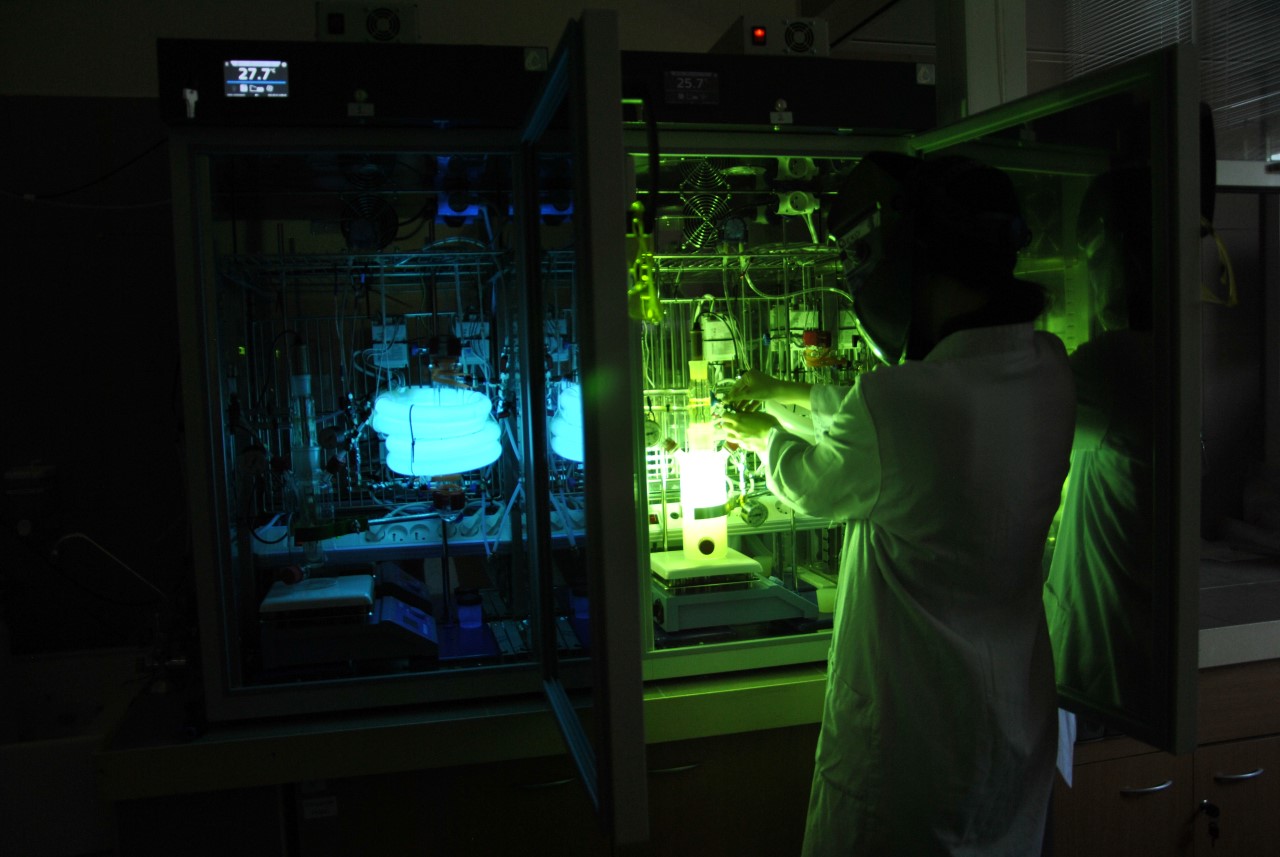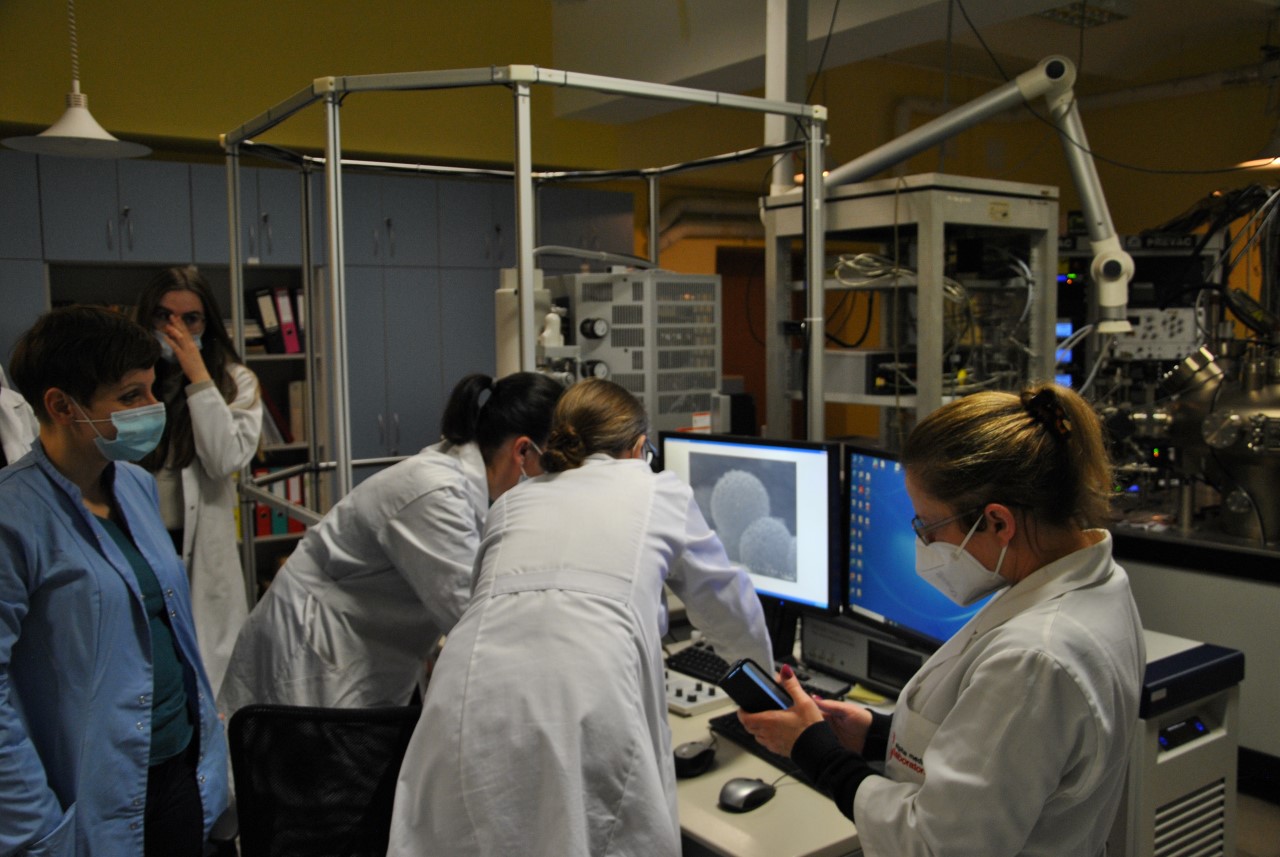PhotoRed
This Polish-Norwegian project with the acronym PhotoRed aims to develop an innovative method of capturing and processing carbon dioxide into useful products

 Project title
Project title
Photocatalytic and photoelectrochemical carbon dioxide reduction (PhotoRed)
 Name of Beneficiary/Beneficiaries
Name of Beneficiary/Beneficiaries
- West Pomeranian University of Technology in Szczecin
- University of South-Eastern Norway (USN)
- SINTEF Industry
- SINTEF Ocean
 Name of programme
Name of programme
Applied research
 Competition
Competition
International programmes
 Project value
Project value
PLN 8 037 500.00
 Funding value
Funding value
PLN 8 037 500.00
 Project delivery period
Project delivery period
from 1 September 2020 till 31 August 2023
Meet our team

From the left: Katarzyna Pełka, Kordian Witkowski, Adrianna Michalska, Karolina Pawłowska, Katarzyna Ćmielewska, Urszula Narkiewicz, Ewelina Kusiak-Nejman, Marcin Gano, Joanna Kapica-Kozar, Iwona Pełech, Ewa Ekiert, Piotr Staciwa, Antoni Morawski, Daniel Sibera
View the results of our work




What problem is addressed by the project?
This Polish-Norwegian project with the acronym PhotoRed aims to develop an innovative method of capturing and processing carbon dioxide into useful products. Carbon dioxide is a burdensome greenhouse gas, the increasing concentration of which in the Earth's atmosphere contributes to the occurrence of unfavourable, often catastrophic climate changes, resulting in such disasters as floods, hurricanes, droughts. Reducing the amount of this greenhouse gas in the atmosphere is one of the most important challenges of our time. In the project, we are working on the development of innovative materials, called photocatalysts, which, under the influence of light energy (UV radiation), enable the reduction of carbon dioxide under mild conditions (at ambient temperature and atmospheric pressure). As a result of such a reduction process in the presence of water, we obtain carbon monoxide, hydrogen, ammonia and methane. The efficiency of the photo-reduction process is so far small, but at least as high as (or higher than) that obtained by researchers from other centres around the world.
Who uses the project results?
In the longer term, everyone will benefit the results of the project since it contributes to reducing climate change and obtaining products that are useful for all. The development of carbon dioxide capture technologies is a significant step towards reducing the concentration of this greenhouse gas in the atmosphere, but it is not a definitive solution to the problem as the gas has yet to be somehow dealt with. The currently used storage methods in exhausted mines or under the seabed do not seem to be a good solution, both in economic and environmental terms. It would be best to convert the captured carbon dioxide into useful products such as hydrocarbons, carbon monoxide and alcohols, and do to do it in such a way as to use as little energy as possible. The materials developed by us enable not only the capture of carbon dioxide, but its processing under mild conditions, so as to obtain carbon monoxide, hydrogen, ammonia and methane, i.e. useful products, needed for various purposes.
Our advice for other applicants
Conditions that must be met to increase the probability of success in grant competitions:
- You need to have a good and unconventional idea for solving some important scientific or technological problem
- You should have encouraging preliminary results confirming the validity of the research assumptions.
- You need to have a strong (scientific or technological) consortium consisting of reliable partners, preferably already proven in cooperation.
- Partners roles in the consortium should be mutually complementary.